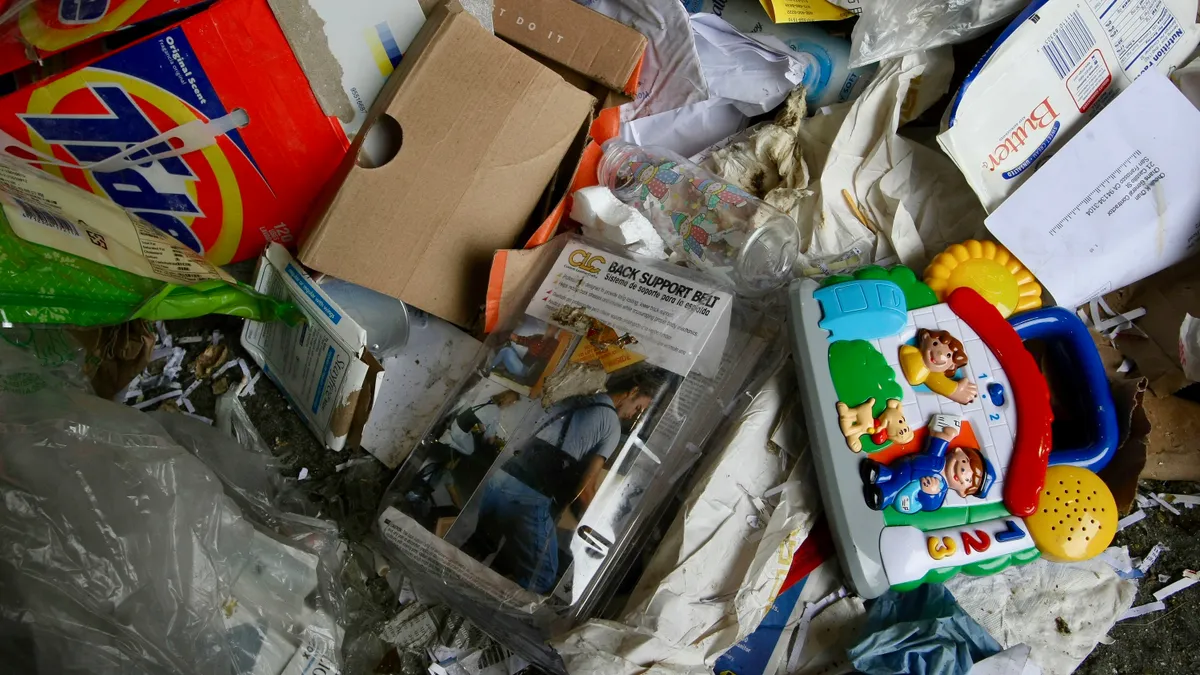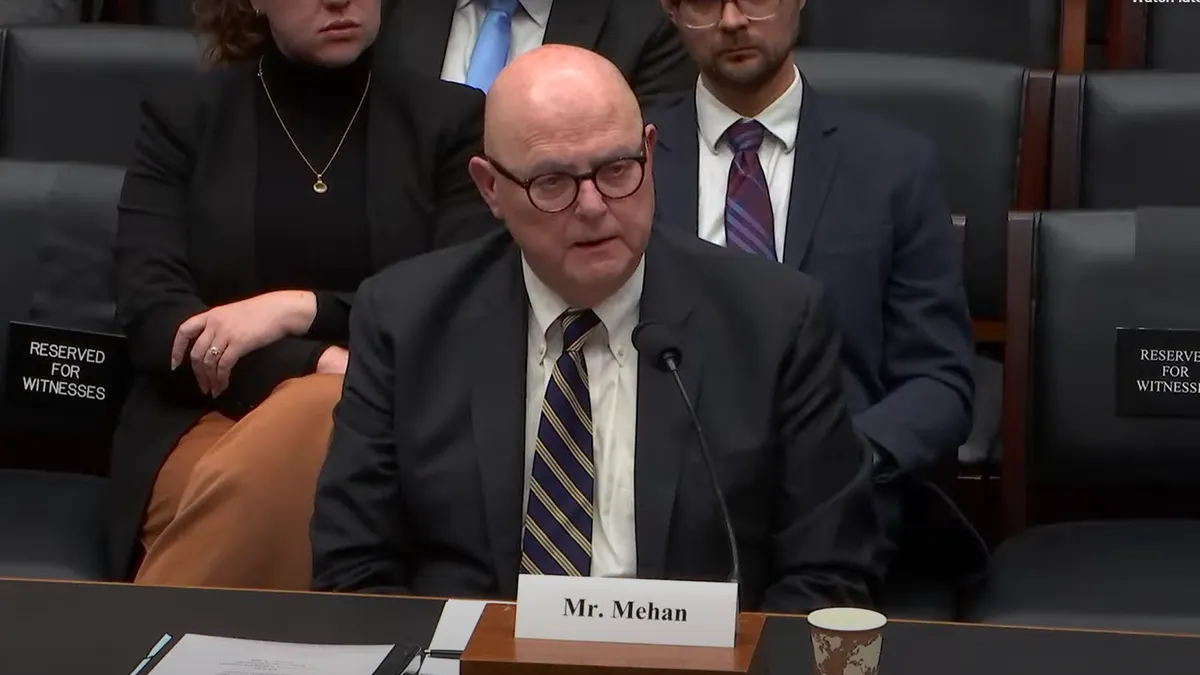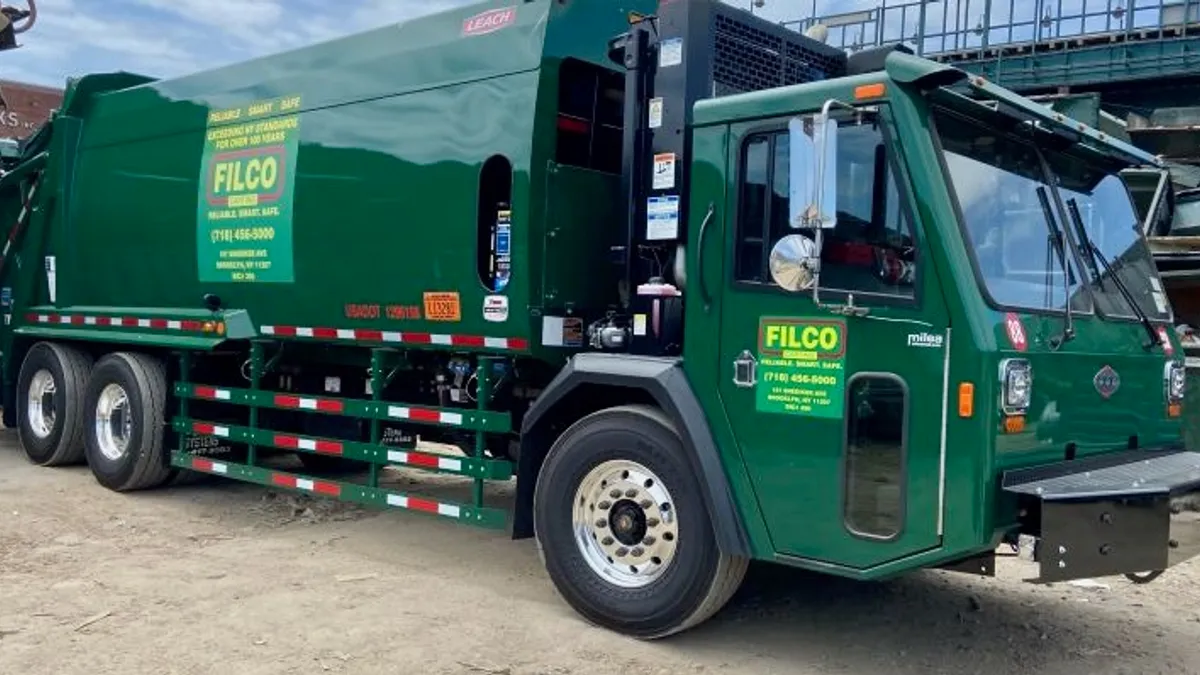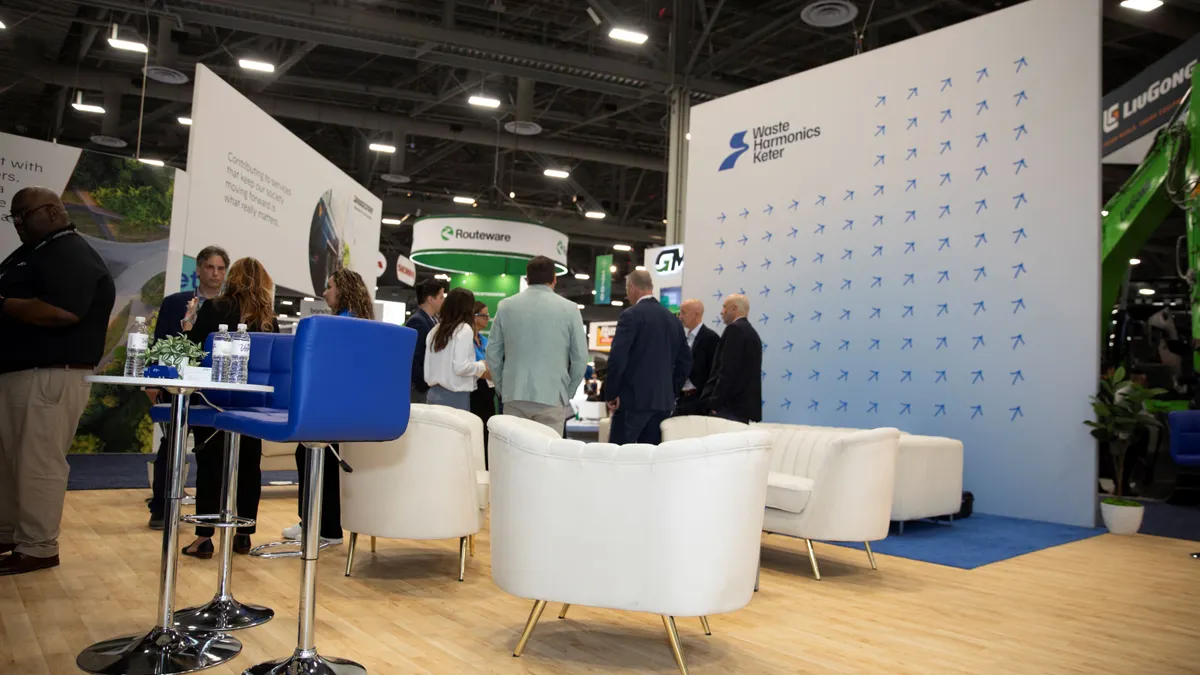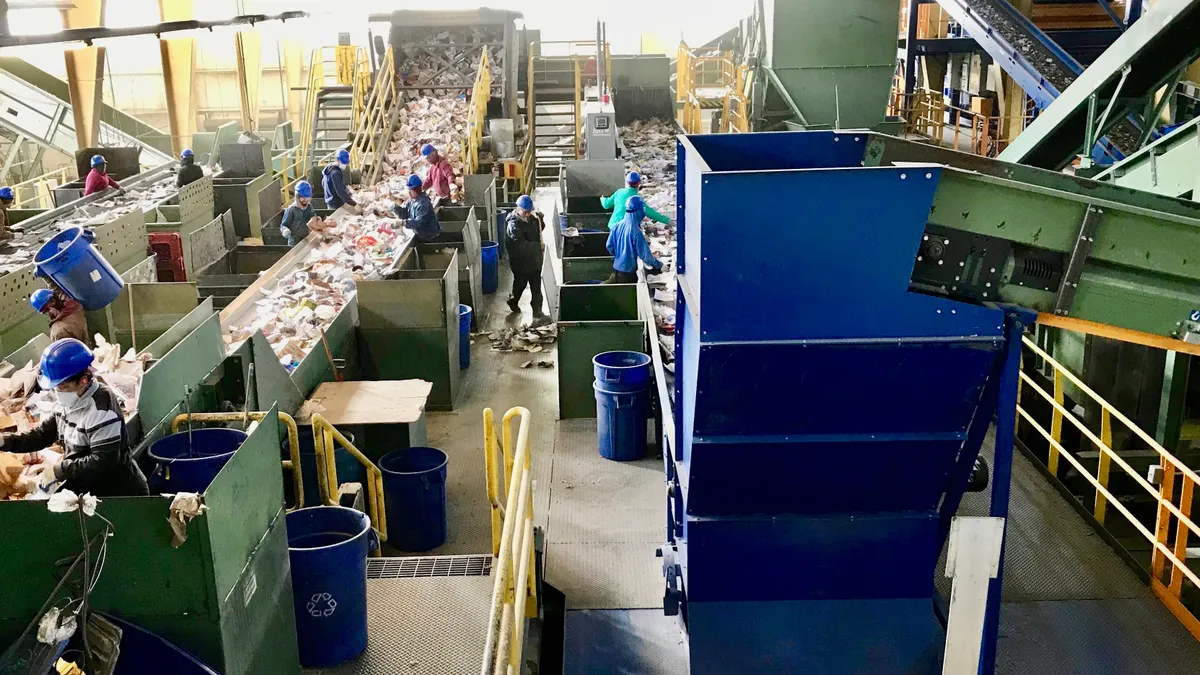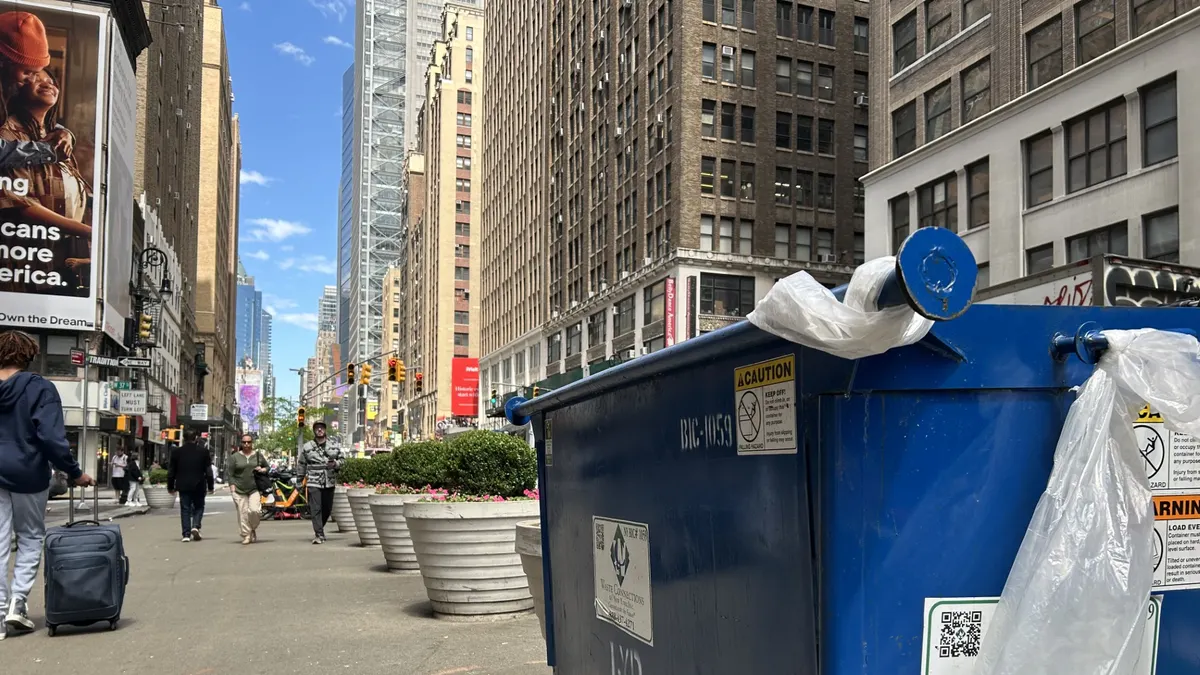UPDATE: July 13, 2021: Gov. Janet Mills signed LD 1541 into law on Tuesday, making Maine the first state to pass an extended producer responsibility (EPR) law for packaging.
The law covers most types of consumer packaging and will require that producers make payments to a stewardship organization. The money will go into a fund local governments could use to pay for packaging management costs. The law also includes an eco-modulation system meant to incentivize companies to create packaging that is easier to recycle and reuse.
Maine already has eight EPR laws for other items such as electronic waste, paint and products that contain mercury, according to the Natural Resources Council of Maine. In June, Gov. Mills also signed LD 8, which creates an EPR program for unused medications.
June 27: States on both coasts could be the first to implement extended producer responsibility laws for packaging if governors in Oregon and Maine sign bills that recently passed their state legislatures.
In Oregon, SB 582 establishes a producer responsibility program for packaging, paper for printing and writing, and food serviceware. The bill, which passed both the House and Senate last week after a few rounds of amendments, now heads to Gov. Kate Brown.
Oregon’s approval comes just a week after Maine lawmakers voted to pass its bill, LD 1541, which creates an EPR program for most consumer packaging. Gov. Janet Mills could take up the bill as early as Wednesday, the bill's sponsor, Rep. Nicole Grohoski, said in an email, after the bill goes through an appropriation process.
Though federal bills such as the Break Free From Plastic Pollution Act includes a section calling for a national EPR program for packaging, these two state bills are the closest EPR for packaging has come to becoming law in any U.S. state.
This signals a potential shift in attitude toward asking producers to manage packaging they put into the market to improve recycling rates and motivate brands to include more recycled content. Though some corporations have been hesitant to support EPR-type policies in the past, the votes in Maine and Oregon come as more than 100 companies recently announced their support for EPR through an Ellen MacArthur Foundation initiative. However, different types of EPR programs involve different levels of producer control, and some stakeholders have criticized models that either put too much control in the hands of producers or create systems that lack accountability.
Packaging EPR in Maine
Maine’s EPR bill covers most types of consumer packaging, but it makes exceptions for beverage containers because Maine has a container deposit program. It also leaves out paint containers, as Maine already has an EPR program for those, and packaging products made to store items for long periods of time. It also exempts some types of small businesses, such as “low-volume” packaging producers that distribute less than 15 tons of packaging a year.
Grohoski has promoted the measure as a way to increase the state’s recycling rate and ease the burden on taxpayers. “Our current recycling system isn’t fair and it isn’t working,” she wrote in a recent Facebook post. “Maine taxpayers are paying an estimated $16 million annually to manage packaging materials and, at best, only 36% of these materials are being recycled.”
Grohoski also made the case that a packaging-focused EPR law will motivate producers to create packaging that can more easily be recycled and that contains more recycled content, she said during a panel discussion at the Plastics Recycling Conference in April. Packaging is about 40% of Maine’s waste stream, and Grohoski says an EPR model specific to this type of material would help achieve the state’s long-standing 50% recycling goal.
If Gov. Mills signs the bill, the state would charge packaging producers for the costs of managing packaging material waste. Those producers would need to make payments to a stewardship organization based on the net weight of each type of packaging material they sell, with the state’s Department of Environmental Protection (DEP) deciding the fee schedule based on collection and processing costs per ton. The money would go into a fund local governments could use for certain recycling and waste management costs, according to the bill.
DEP will select and contract with a packaging stewardship organization to operate the EPR program. The organization will need to report data such as tonnage of packaging collected and to provide funding for infrastructure and education improvements, according to the bill. The bill also includes an eco-modulation system that charges producers less for packaging that has increased levels of recycled content or "incentivizes less packaging and better packaging,” Grohoski said in an email.
To pass both the House and Senate, Maine’s bill underwent several amendments, such as exempting small, local food producers who sell perishable food and removing a requirement that retailers must check to make sure they are selling compliant brands.
A committee amendment specified that municipalities would be reimbursed for the cost of disposing of packaging materials that are not “readily recyclable” through any form of disposal, “which follows the principle of making the cost-causers pay,” Grohoski said. However, a floor amendment removed the references to disposal after the governor “expressed discomfort with this approach,” she said.
Sarah Nichols, the Natural Resources Council of Maine's Sustainable Maine director and a supporter of the EPR bill, said the amendments were “necessary to gain the support we needed, and this is still a strong EPR bill.”
Packaging groups such as AMERIPEN applauded the removal of the disposal cost mention, but Dan Felton, the organization’s executive director, said it is still disappointed that the Maine legislature supported LD 1541 instead of an alternative bill backed by the packaging industry that would have allowed the stewardship organization to have more control over the EPR process, including setting the fee schedule.
Shannon Crawford, director of state government affairs for PLASTICS, also criticized the bill, saying in a May newsletter that “bad process leads to bad policy. This misguided EPR bill passed without thorough consideration and could lead to the first statewide EPR policy in the United States. It likely wouldn’t be the last.”
However, Felton said the final bill does have positive elements, such as its focus on recycling infrastructure improvements and a call to conduct a statewide recycling needs assessment, “all of which we have been pushing for in Maine and elsewhere as part of a better model for packaging producer responsibility."
Though supporters are hopeful Mills will sign the bill, the American Forest & Paper Association has called for the governor to veto the bill, saying the legislation would hurt the paper packaging industry. The bill “does not recognize the material recovery and market development achievements of the paper industry” and “ignores the fact that our industry has achieved a consistently high paper recycling rate” of about 63%, it said in a statement.
If Mills signs the bill, the DEP will still need to develop regulations for how to carry it out. Joe Fusco, a vice president for hauler and MRF operator Casella Waste Systems, said the regulatory development process is where many details of the program will get hashed out, and it’s critical for stakeholders like MRFs and others to take part. Casella initially did not take a position on the Maine EPR bill because too many details about the bill’s implementation were up in the air, he said, but the company is “very interested” in weighing in on regulatory implementation and making sure the resulting program works alongside the state’s existing recycling infrastructure.
“We want to do EPR, but in a way that protects the economic sustainability of a complex, sophisticated recycling structure that has been built up over 40 years. That’s the perspective we will bring to the table,” said Fusco.
Waste Management, another major hauler and landfill operator in Maine, does not have any MRFs in the state and “didn’t engage in the debate,” said Garrett Trierweiler, director of public affairs of Waste Management in New England.
Packaging EPR in Oregon
Oregon’s SB 582 creates a producer responsibility program for multiple types of packaging and would create a producer responsibility organization (PRO) that implements an EPR plan approved by Oregon’s Department of Environmental Quality.
DEQ is a major supporter of the bill and has touted its goal of using producer funding to expand recycling services for people with limited access, such as those in multifamily housing and low-income residents. It says the bill also helps ensure that covered products find “responsible end markets,” and it requires processors to meet new performance standards, “including for material quality, reporting, and paying living wages to facility workers."
Like Maine’s bill, Oregon’s EPR program includes an ecomodulation system that charges producers more for packaging that is harder to recycle. Oregon also has paint EPR, so it also makes exceptions for paint cans, as well as for packaging for prescription drugs, beverage containers that apply to Oregon’s bottle bill, and some types of industrial packaging.
It also calls for creating a new statewide collection list meant to allow people to recycle the same items regardless of where they are in the state, DEQ said in a news release. The PRO, along with the Environmental Quality Commission and a recycling system advisory council, would create the list, according to the bill.
The bill generally has support from recyclers and local governments, while packaging trade groups were among those in opposition.
CORRECTION: A previous version of this story misstated the types of costs Maine packaging producers would be responsible for paying. The bill would charge them for the costs of managing packaging material waste.


